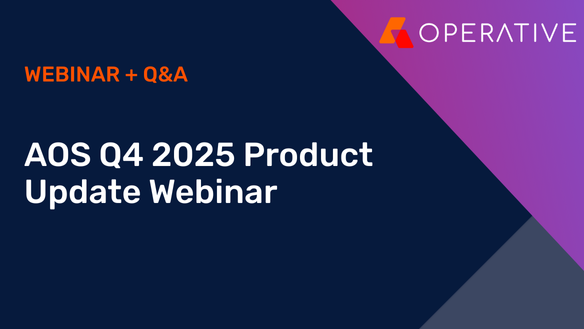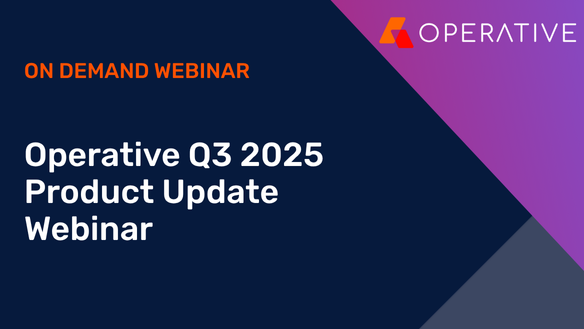Operative AOS Q4 2025 Product Update Webinar
By The Operative Team
Learn more about the advances we are making to Operative solutions. Register for the webinar to get a firsthand look at our new capabilities, and insight into upcoming product updates.









